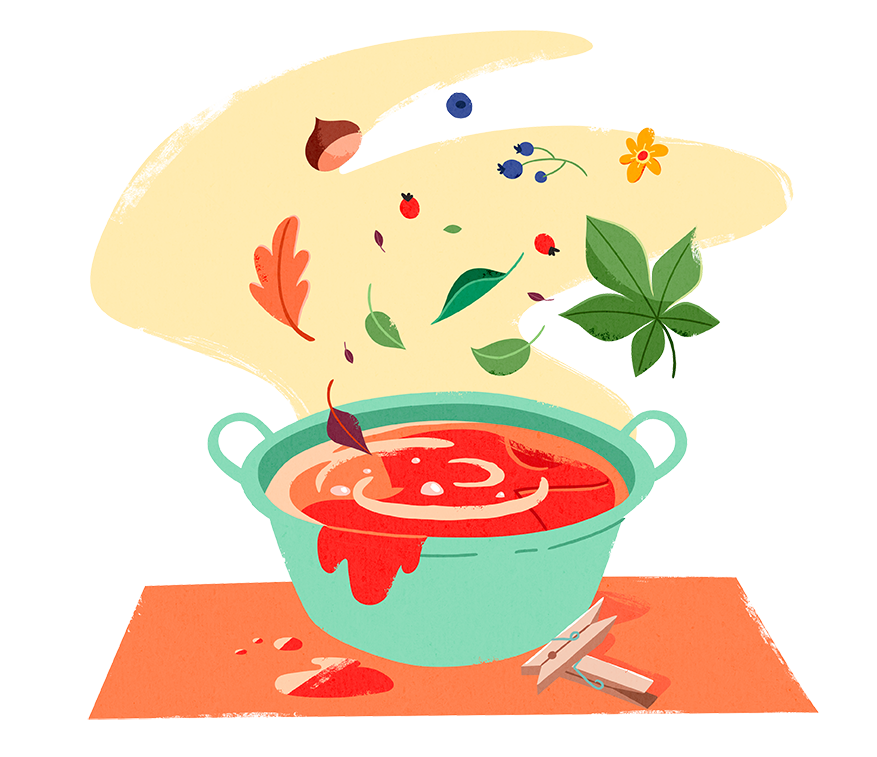Sight

You try too
Have you got a white cotton T-shirt you would like to dye with natural colouring?
In addition to the T-shirt (or another natural fabric in a neutral colour), you will need: a work surface, a bucket, some water, a large cooking pot, a stove, a clothes-line, two clothes pegs and, of course, fixing agent and dye.
To find out how to make a natural dye, click here and you will discover which plants you can use for dyeing and the procedure to follow.
#conoscoilbosco
Educational trail – Neggio Municipality
Did you know that…
Once upon a time the woods were used as a colour palette for dying clothes? The clothes people used to wear were largely coloured with natural essences extracted from woodland plants: trees, fruits, flowers, roots, herbs, in some cases even insects.
The chestnut, one of the most widespread trees in Ticino, was used both as a colouring agent (for blackish-brown shades) and for the extraction of tannin. How is it obtained? Chopped up wood is boiled until you get a liquid rich in tannins.
What’s it used for? It’s a perfect fixative for mordanting. What’s that? It’s a bath containing substances known as mordants or fixatives to which fibres and fabrics are subjected before being dyed. It facilitates better colour fixation. Chestnut tannin was also widely used for tanning leather.

How many do you know?
If you have read the panel carefully, you will have all the information to answer the questions correctly.
What colour does walnut husk make?
A) Blue
B) Red
C) Green
D) Brown
Which fixing agent is extracted from chestnut?
A) Tannin
B) Indigo
C) Endorphin
D) Penicillin
What is mordanting?
A) An insect’s bite
B) A type of shrub
C) A dyeing process
